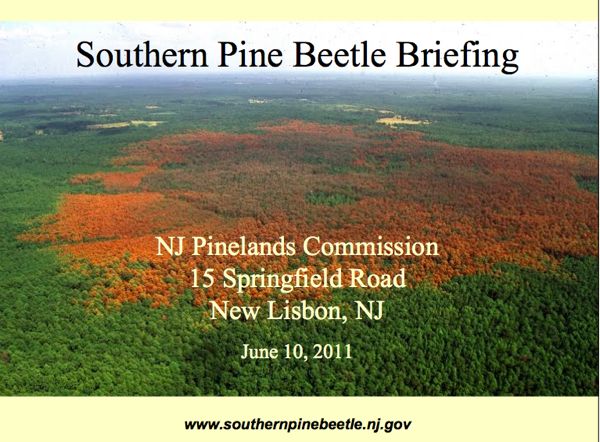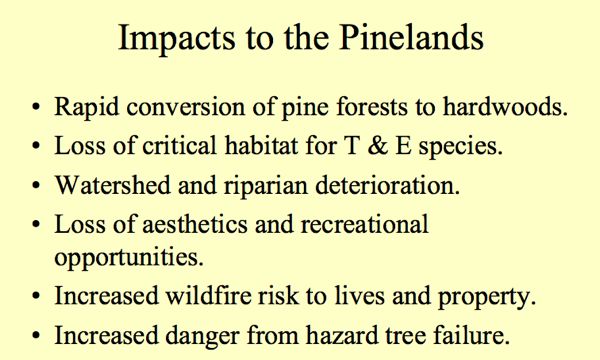Environmental Planning – Like Regulation – is Taboo in The Christie Administration
The Huge Story The NJ Press Corps Fails To Cover
Christie Waives The Future Goodbye
We’ve written numerous posts about across the board failures by the Christie administration to engage in environmental planning – whether via the NJ State Planning Act or the various individual environmental laws that mandate program plans, such as the Water Supply Management Act.
At the same time the Christie Administration ignores its legally mandated State planning obligations under those environmental laws, it has weakened existing regional planning bodies in the Highlands and the Pinelands via the Governor’s appointment and budget powers.
Similarly, the Governor has opposed legislation that would create a new regional planning body for the coast, and he has simply ignored the need to prepare climate change adaptation plans to better protect NJ from extreme weather events and other projected climate change impacts.
And perhaps most critically, the Gov. has rejected planning as a tool in Sandy recovery.
Amazingly, virtually none of this pattern of unprecedented failure has been reported in the NJ press corp. I won’t speculate why in this post, but just make the observation.
Here’s how Gov. Chrisite’s failure to plan is looked at from a national perspective – a story that is not reported in NJ:
RISK:
Feds buy house hurt in Sandy, but critics say program is flawed
Evan Lehmann, E&E reporter
Published: Friday, October 18, 2013
ATLANTIC CITY, N.J. — New Jersey and federal officials finalized the first public purchase of a home damaged by Superstorm Sandy on Tuesday, accelerating a buyout program that could make more than 100 additional offers over the next two weeks, according to Dan Frankel, the business administrator of Sayreville.
The purchase marks a new phase for the state’s aggressive effort to buy 1,000 homes wrecked by the historic storm that struck nearly a year ago, using $300 million in state money and much more from the federal government to create open space in the floodplain. An additional 300 homes that have been repeatedly inundated, but not by Sandy, are also targeted in the buyout program, which requires structures to be razed.
“We had our first closing on Tuesday,” Frankel said. “It characterizes, hopefully, residents trying to move on. It’s very emotional and very trying for the residents.”
Even as the program rapidly moves into the buying phase, flood experts criticized the state for offering buyouts to residents on a first-come, first-served basis. They said the state might be missing houses that are more vulnerable to stormwater — and more expensive for taxpayers — by offering a voluntary program rather than identifying the riskiest homes and then trying to acquire them.
Chuck Latini, the state president of the American Planning Association, told about 200 floodplain managers and other practitioners at a gathering here this week that some of the state’s rebuilding decisions are influenced by politics rather than sound land use policies.
“When you start looking at a $300 million buyout program [that’s] not strategically planned, what will the outcome be? It will be wasted money,” Latini said. “It likely will be a crapshoot on its success. Yes, there will be some good outcomes, of course, because you can’t throw that kind of money around and not have some success. But probably we’ll have just enough [success] so on Election Day we’ll have enough sound bites to get through that cycle.”
The criticism fits into a broader frustration among some land use planners and flood protection professionals who believe the administration of Gov. Chris Christie (R) hasn’t taken the time to fit all the recovery efforts into a comprehensive design. They believe that everything from building dunes and siting homes to surrendering flood-prone land should be linked together under a strategy outlined for local officials by the state.
Administration says voluntary buyouts are ‘scientifically done’
David Kinsey, a former director of the state Department of Environmental Protection’s Division of Coastal Resources, said there’s no sign that the Christie administration will provide that kind of navigation. Instead, he said, individual towns are deciding where and how to build without knowing what all the future hazards are.
The buyouts fall into the same category: Towns are making the decisions about where to tear down homes instead of the state, which steers state and federal funding into the project.
“It’s first-come, first-serve and voluntarily. That’s not strategic,” Kinsey said.
“There are a lot of interests that need to be weighed,” he added. “Personal-property-type interests, sure. But there are some public interests as well. So if the storm comes again and knocks a structure off its foundation and that structure runs into another structure, which is what happens, maybe that first house is in a hazardous location and it’s in the public interest to think that through.”
The Christie administration rejects those criticisms, saying the homes targeted for buyouts were identified using sound science to avoid future damage. The state, for example, has sought to buy out entire streets in Sayreville, a river town that’s seen repeated flooding over the past several years.
“It’s definitely not random. It’s definitely scientifically done,” said Larry Ragonese, a spokesman for the Department of Environmental Protection, which is administering the program. “In future storms, emergency teams won’t have to be sent in there.”
Altogether, 129 homes in Sayreville are targeted for buyouts. The mitigation program is considered one of the best ways to reduce financial risk to taxpayers by lowering losses in the National Flood Insurance Program and through disaster recovery costs. The Sayreville house purchased Tuesday will be razed within 90 days, according to rules established by the Federal Emergency Management Agency.
‘Not everything needs to go back there’
Still, several New Jersey flood experts see a troubling theme in the buyout program: It’s not being used along the coast where the most severe damage occurred on barrier islands that were sometimes dramatically reshaped by Sandy. And although making it voluntary might have political appeal, it doesn’t mean the riskiest homes will escape future storms, they said.
Mark Mauriello, a former commissioner of the Department of Environmental Protection, believes vacation getaways like Ortley Beach in Toms River should be prioritized. Three rows of beachfront homes there were pulverized into splinters during Sandy. Instead of rebuilding them on the narrow barrier island, the state should perhaps use that space to build bigger dunes, he said.
“I think you have to look at Toms River and say, ‘Not everything needs to go back there,'” Mauriello said, adding that the state should identify an “acquisition zone” from which homes would be removed over a long period.
David Conrad, a water resources consultant who’s studied federal land use policies for years, said the affluent town of Mantoloking is another good candidate for buyouts. Mantoloking is located on a narrow section of a barrier island, and Sandy breached it in more than one place.
“I think it will be critical to take a regulated approach and identify the highest-risk areas,” Conrad said. He said the state’s criteria should be based on “geological and hydrological processes” rather than political ones.
Others think it’s a fool’s errand to talk about buying out people who don’t want to go. Christie made it clear in the wake of Sandy that he would not force people who suffered damage to surrender their property.
“There’s almost no interest at all from people living along the shore,” Ragonese said of buyouts. “Those properties are valuable. They like living along the shore. They know the risks.”

